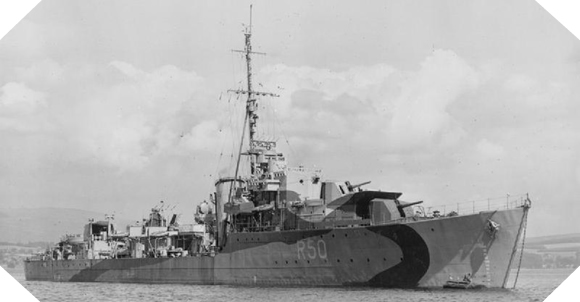HMS Venus – R50
Index of Allied warships during Operation Neptune
History, technical sheet and photo

HMS Venus history
This class V destroyer was launched on 23 February 1943 and entered active service on 28 August of the same year. Called HMS Venus, it is deployed in the English Channel and in the North Sea in the 26th fleet of destroyers after its tests at sea to carry out patrols and escorts.
In May 1944, as part of the preparation for Operation Overlord, it joined the Bombarding Force E, itself subordinate to Task Force J. It participated in Exercise Fabius on May 3rd, the general rehearsal of the amphibious operations in Normandy. The Venus escorts the J9 convoy across the Channel on the night of June 5-6, 1944 to Juno Beach. On D-Day, he participated in the fire support of the Allied troops and patrolled in the area until June 27 before moving off Cherbourg the next day in order to engage the German defenses of the port city.
Until December, it carried out new patrols and escorts in the Channel and in the North Sea. After a rapid restoration, HMS Venus was deployed until the end of the Second World War in the Indian Ocean against Japanese maritime and air forces.
Back in the United Kingdom, it served in the Mediterranean Sea in the 3rd destroyers fleet before being transformed into an anti-submarine frigate. Placed as a reserve, the Venus eventually returned to service for experiments on the effects of new armaments (such as the Seadart guided missile tests in 1969). On December 20, 1972, it was sold for being scrapped.
HMS Venus technical sheet
Creator/User: Great-Britain
Denomination: R 50 – H.M.S. Venus
Class: V-class destroyer
Crew: 180-225 sailors
Armament (1944): 4x 120 mm guns, 2x 40 mm anti-aircraft guns, 6x 20 mm anti-aircraft guns, 8x 533 mm torpedo tubes
Displacement: 1,710 tons
Speed: 37 knots
Length: 111 m
Beam: 10,87 m
Draught: 3 m
